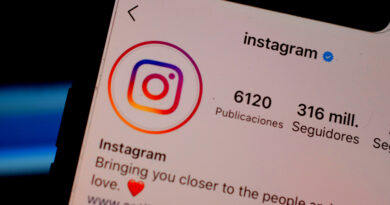Harmony OS: Huawei’s Operating System
Since the mid-2000s and now that both iOS (Apple, 2007) and Android OS (Google, 2008) are well past their 10-year anniversaries, it can be difficult to imagine a third power player in the smartphone operating system market and Harmony OS.
According to Global Stats, Android is controlling over 76% of smartphones from a multitude of manufacturer handsets, and Apple is at almost 23% on its own devices, while the rest of today’s smartphones (less than 1%) run Android and iOS alternatives such as: Windows OS, KaiOS and others. It’s difficult to imagine how anyone could break into this market.
Harmony OS in Recent News
Recently though, several factors have pushed Huawei, China’s leading technology manufacturer, to begin developing its own OS - Harmony OS . The recent controversy between the US and China that took place in mid-May 2019, has also forced Google to pull Huawei’s license to use Android, the open-source OS, a version of which most manufacturers except Apple use on their devices.
To broadly summarize, the US and China, the world’s two largest national economies, have had an ongoing trade war. In 2018, US President Donald Trump raised import taxes on technology (laptops, smartphones, smart TVs, etc.) coming to the United States from China. This decreases US goods being built in China as he believes this to be an “unfair trade practice,” where some of the biggest American corporations rely on China building their products instead of having them built back home. This also means that Trump wants to keep manufacturing jobs in the US instead of China.
In mid-May 2019, following an executive order from Trump, the US Department of Commerce Bureau of Industry and Security Entity List added Huawei on its blacklist. This means that Huawei is not allowed to use any form of American components, technology, software, or chips into any of its technologies. If you think about it, it’s quite natural that Trump would take this decision following the trade war. But another reason Trump took this decision was because he had a reason to believe that Huawei was a security threat on the US due the telecom giant’s closeness with the Chinese government.
Huawei’s vice-president of communications, Joe Kelly spoke to Reuters at the heat of this news and said, “We are very open and transparent. In the US-China trade war we have become a bargaining chip.”
And now Huawei has unveiled its new OS, Harmony OS.
Huawei’s Meteoric Rise
Only two or three years ago, most consumers were still having trouble pronouncing the name Huawei. According to International Data Corporation (IDC), at the end of 2017, Huawei was a solid third in terms of smartphone market share, with an impressive 10.7% (Apple being first with 19.6% and Samsung second at 18.9%).
In less than two years though, Huawei has jumped to second place, with a massive 8% spike to claim 18.9% of the market, trailing Samsung which rose to 23% up more than 3%, and followed by Apple, which fell almost 8% to 11.8% of the smartphone market in the first quarter of 2019.
In other words, making sense of these numbers, Huawei can easily become the second-most used OS if only its devices run Harmony OS . Huawei doesn’t plan to take the Apple route though, and keep its software for its own devices exclusively. It plans to have an open source platform, similar to Androids, where any manufacturer of smart tech can utilize the microkernel-based, distributed OS developed by Huawei.
The 5G and IoT Upper Hand
Currently, Huawei is the only major manufacturer with 5G capabilities. An exponentially faster way to connect to the Internet, many experts see 5G as essential for the much-anticipated “Internet of Things” (IoT) where smart devices are all connected and communicating in real-time, allowing for things like self-driving cars that can quickly and reliably communicate with traffic lights, other cars, pedestrian devices, etc. to ensure a “smart city” is both efficient, and safe.
Huawei seems poised to reap the rewards of being the first to develop and deploy this technology, and this bet is clear with how Harmony OS is being developed.
A microkernel-based, distributed OS means that the same software can run on different devices, from smart watches, smart speakers, home appliances and of course smartphones. It also makes the OS “future-proof” and can easily be updated and deployed across a multitude of devices.
What’s Next
Huawei claims that Harmony OS is faster and more secure than Android, and even boasts it’ll be quicker than iOS. However, according to the latest research from Counterpoint’s Market Monitor service, Huawei’s rapidly growing in market share, with some projections showing it might soon surpass Samsung, as well as their near-monopoly on 5G technology so far, makes them in an ideal position to create an OS that will surpass the two current heavyweights that dominate the world’s smartphones: Apple’s iOS and Google’s Android.
Keep an eye out for Harmony OS, or as it’s known in China, HongMeng OS.




